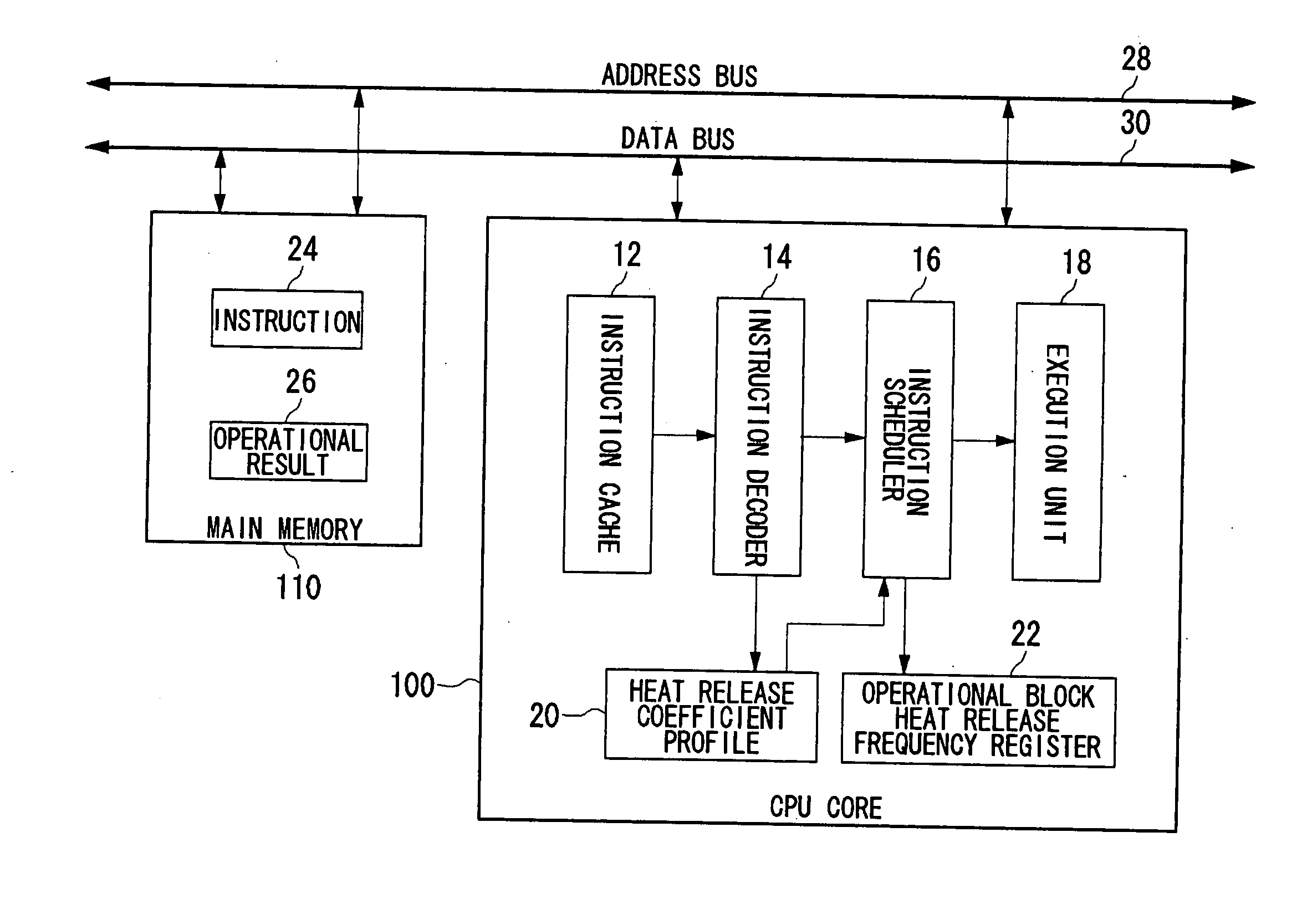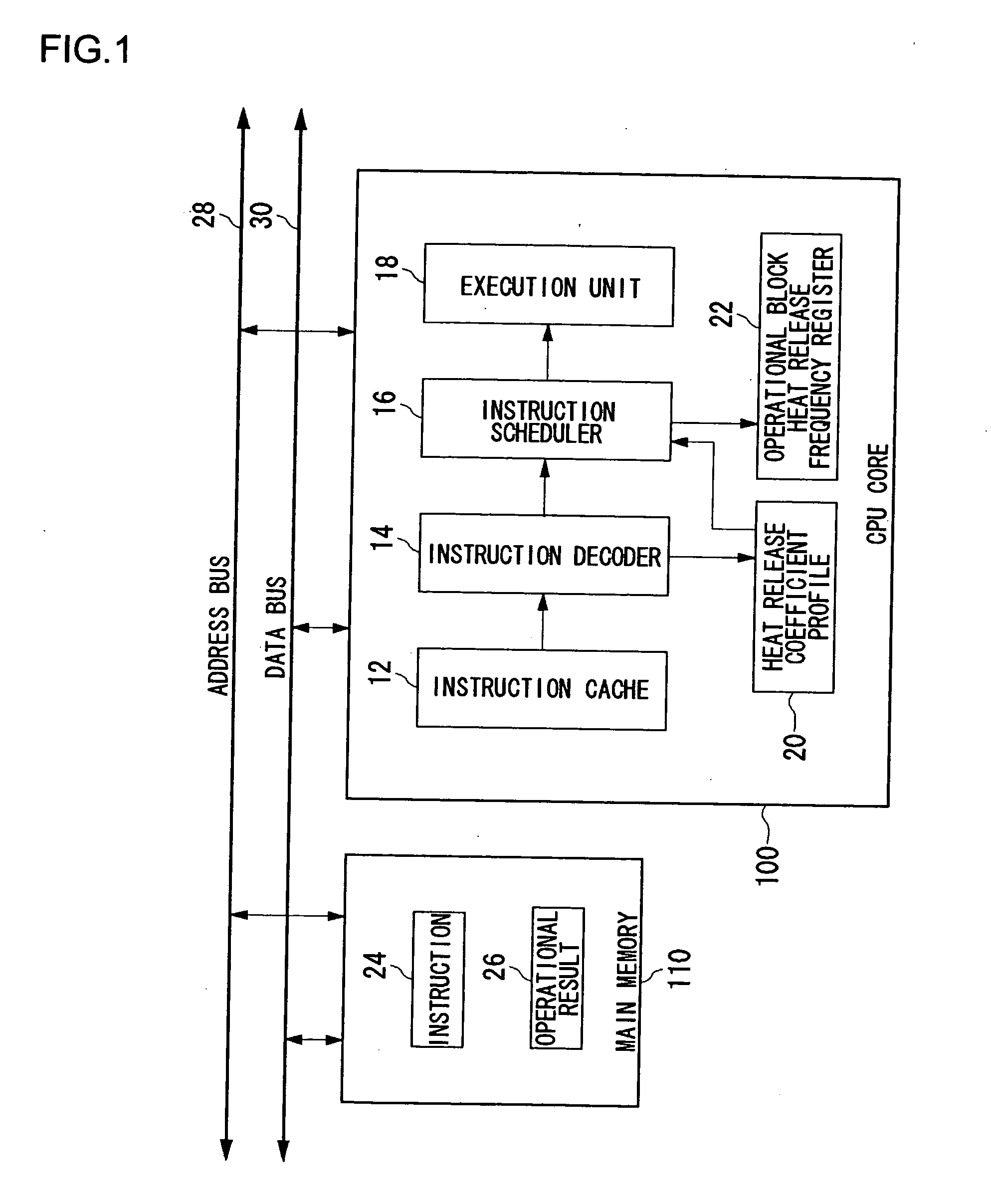Processor, multiprocessor system, processor system, information processing apparatus, and temperature control method
a multi-processor system and temperature control technology, applied in the field of processor technology, can solve the problems of inability to avoid “hot spot”, abnormally high temperature of the chip, and improper operation of the chip, so as to prevent mal-operation, control the heat value generated by the processor, and avoid the effect of deteriorating the performance of the processor
- Summary
- Abstract
- Description
- Claims
- Application Information
AI Technical Summary
Benefits of technology
Problems solved by technology
Method used
Image
Examples
first embodiment
[0025]FIG. 1 illustrates the structure of a processor system according to a first embodiment of the present invention. The processor system includes a CPU core 100 and a main memory 110 which are connected to an address bus 28 and a data bus 30. The CPU core 100 designates an address in the main memory 110 and reads and writes data in the main memory 110. The CPU core 100 includes an instruction cache 12, an instruction decoder 14, an instruction scheduler 16, an execution unit 18, a heat release coefficient profile 20 and an operational block heat release coefficient register 22. The main memory 110 stores an instruction 24 and an operational result 26.
[0026] The instruction 24 read by the CPU core 100 from the main memory 110 is cached in the instruction cache 12. The instruction decoder 14 sequentially decodes the instruction 24 cached in the instruction cache 12 and supplies the decoded instruction to the instruction scheduler 16. The instruction scheduler 16 schedules the inst...
second embodiment
[0050]FIG. 6 illustrates the structure of a processor system according to a second example of the present invention. The processor system according to the second embodiment is a multiprocessor system including two subprocessors 230a and 230b connected to a bus, in addition to a main processor 200 corresponding to the CPU core 100 of the first embodiment. The main processor 200 accesses a DRAM 220 via the bus and reads data therefrom. The main processor 200 caches the data in the cache 210. The main processor 200 allocates tasks to the two sub-processors 230a and 230b as appropriate for execution of a program.
[0051] The main processor 200 includes various functional blocks of the CPU core 100 described in the first embodiment including the instruction cache 12, the instruction decoder 14, the instruction scheduler 16, the instruction unit 18, the heat release coefficient profile 20, the operational block heat release frequency register 22, the heat release frequency adder 32, the he...
PUM
 Login to View More
Login to View More Abstract
Description
Claims
Application Information
 Login to View More
Login to View More - R&D
- Intellectual Property
- Life Sciences
- Materials
- Tech Scout
- Unparalleled Data Quality
- Higher Quality Content
- 60% Fewer Hallucinations
Browse by: Latest US Patents, China's latest patents, Technical Efficacy Thesaurus, Application Domain, Technology Topic, Popular Technical Reports.
© 2025 PatSnap. All rights reserved.Legal|Privacy policy|Modern Slavery Act Transparency Statement|Sitemap|About US| Contact US: help@patsnap.com



